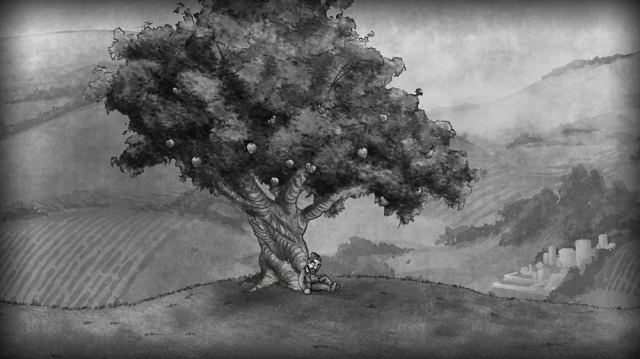The Bridge review (XBLA)
The Bridge was developed by Ty Taylor and Mario Castañeda and published by Midnight City. It was released on November 13, 2013 for $9.99. An Xbox 360 copy was provided for review purposes.
The Bridge is advertised as “a cerebral 2D puzzle experience”; a genre that is plentiful on the Xbox Live Arcade marketplace. It follows many of the current trends in puzzle gaming while also introducing a few new and interesting mechanics. But does The Bridge build enough upon its puzzle roots to deliver a unique and riveting experience that is all its own? Or does it fall flat in its attempt to provide brain-teasing puzzles that are more frustrating than fun?
Here’s what we liked:
Beautiful art style – The Bridge has a hand-drawn style reminiscent of puzzle titles like Braid and Machinarium, but it’s distinct enough to merit its own appraisal because it’s devoid of color. The contrast of black and white is used to great effect in The Bridge in both the aesthetics and as a gameplay mechanic. Switching character colors between black and white allows for certain color-coded keys to be picked up or doors to be opened. The intricately designed levels are also a wonder to behold, weaving through the imagination and pulling gamers through strange and magical puzzles.
Interesting gameplay mechanics – By making use of a minimalistic control scheme that focuses on rotating levels to allow for shifts in gravity among other simple gameplay mechanics, The Bridge manages to feel new and fresh. The elaborate puzzles offer, for the most part, a compelling experience, because the rotational controls require players to view levels at a full 360 degrees, instead of as flat and straightforward paths. Overall, The Bridge is a very solid puzzle game.
Here’s what we didn’t like:
Overly familiar presentation – Playing through The Bridge will most undoubtedly bring up memories of the aformentioned XBLA title Braid, and not just because of the hand-drawn art style, either. To travel between worlds and levels you enter through various doors in a house, and instead of books unveiling the story, the player walks past a bust that delivers the plot in a fashion similar to Braid. The game can also be rewinded at any time through a press of a button in case the player ever makes a mistake.
Uneven difficulty settings – The game maintains an inconsistent tone in terms of difficulty through the majority of the story. Early on the puzzles are straightforward, but end-of-level puzzles tend to be trickier and occasionally frustrating. During the mirror levels, which are unlocked after beating the main game, the difficulty jumps all over the place, sometimes going from ridiculously difficult to stupidly easy before shooting back up again. This probably won’t be as noticeable if you aren’t trying to power through the game in a few sittings, but it should still prove frustrating at times.
On the short side – After the main story and mirror levels are complete, there is very little reason to return to The Bridge, even if you are hunting for the Achievements (which, by the way, might bother a select few due to their odd point values). Past XBLA puzzle games like Braid extended themselves by challenging players to speedruns, while The Misadventures of P.B. Winterbottom included challenge maps with time trials and other tests. The Bridge‘s game mechanics are solid enough to support such features, but unfortunately they don’t.
The Bridge gets a lot right: an interesting gameplay mechanic of rotating levels using the trigger buttons and many strong puzzles. If the setting didn’t feel overly familiar, the difficulty was more consistent and there was something more to wet one’s appetite once the credits had rolled, then this would be an easy sell. As it stands, The Bridge is a quick but welcome treat, but one that is ultimately forgettable. If you’re a puzzle fanatic, then The Bridge is an interesting distraction; otherwise, you’ll want to just stick to the demo.
Score: Try it





